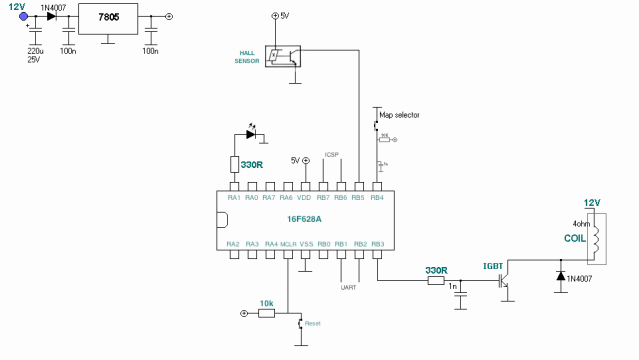Hi all,
I'm making a programmable ignition module for a very old scooter and have made the below schematic however I've found that with a multimeter in place of the coil the voltage switches correctly and I see 12V however when I put the coil in place the voltage stays at 0V.
The IGBT is this one: HGTP7N60C3D
Any ideas what I'm doing wrong? I'm not very good at the electronics side of things unfortunately.
Thanks for any advice!

I'm making a programmable ignition module for a very old scooter and have made the below schematic however I've found that with a multimeter in place of the coil the voltage switches correctly and I see 12V however when I put the coil in place the voltage stays at 0V.
The IGBT is this one: HGTP7N60C3D
Any ideas what I'm doing wrong? I'm not very good at the electronics side of things unfortunately.
Thanks for any advice!

Last edited:






